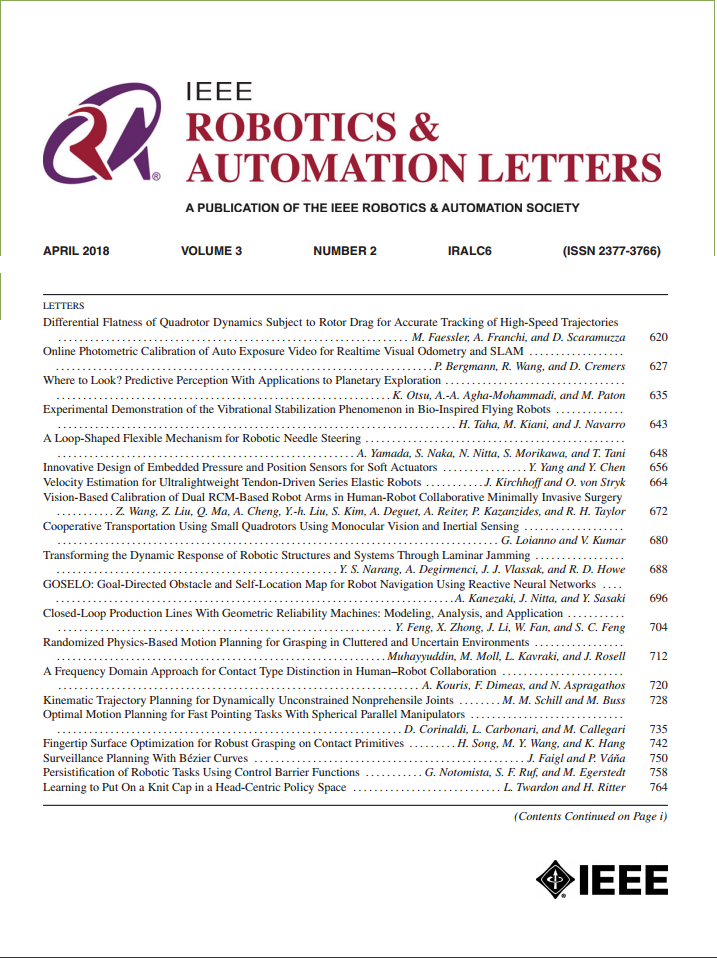Nonlinear Optimization for Personalized Path Planning for a Hybrid FES-Exoskeleton System
IF 4.6
2区 计算机科学
Q2 ROBOTICS
引用次数: 0
Abstract
Hybrid Functional Electrical Stimulation (FES)- exoskeleton systems are emerging as promising assistive technologies because they can drive users through trajectories that mimic functional movements with higher precision than FES-alone and reduced torque consumption compared to an exoskeleton alone. Limitations in FES movement accuracy and exoskeleton power and size requirements from high torque commands prevent hybrid systems as prevalent assistive devices in real-world settings. Additionally, difficulties in effectively coordinating the two subsystems and heterogeneity of motor capabilities across neurologically impaired individuals limit their widespread adoption. This letter presents a methodology for nonlinear trajectory optimization to create feasible, personalized trajectories between desired set-points that were evaluated in simulation with seven neurologically intact user models. The personalized trajectories ensure dynamic feasibility while maintaining significant exoskeleton torque reduction in the hybrid FES-exoskeleton system compared to the exoskeleton-alone. The personalized trajectories also maintain similar tracking accuracy compared to minimum jerk trajectories.非线性优化用于 FES-Exoskeleton 混合系统的个性化路径规划
本文章由计算机程序翻译,如有差异,请以英文原文为准。
求助全文
约1分钟内获得全文
求助全文
来源期刊

IEEE Robotics and Automation Letters
Computer Science-Computer Science Applications
CiteScore
9.60
自引率
15.40%
发文量
1428
期刊介绍:
The scope of this journal is to publish peer-reviewed articles that provide a timely and concise account of innovative research ideas and application results, reporting significant theoretical findings and application case studies in areas of robotics and automation.
 求助内容:
求助内容: 应助结果提醒方式:
应助结果提醒方式:


